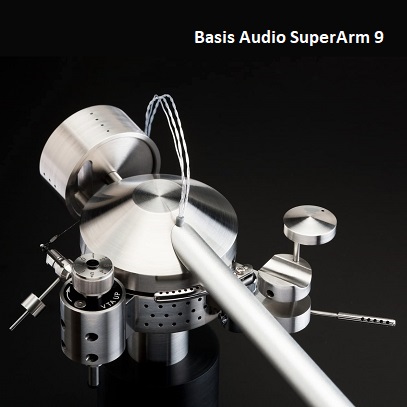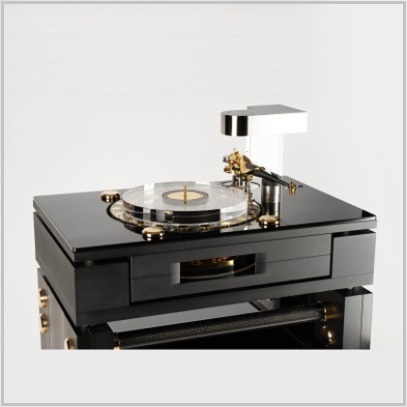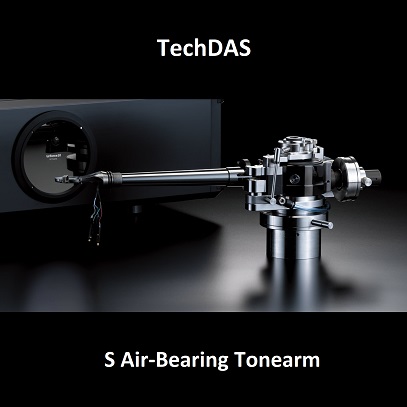A TECHNICAL SURVEY OF TONEARM ARCHITECTURES
For the discerning audiophile, the pursuit of pristine analog sound often leads to an exploration of every component in the playback chain. Among these, the tonearm stands as a critical, yet often enigmatic, element. It is the delicate bridge between the cartridge (which holds the stylus) and the turntable plinth and motor system. The tonearm is tasked with the formidable challenge of guiding the stylus to trace the microscopic grooves of a vinyl record with unwavering precision.
Any deviation, friction, or resonance introduced by the tonearm fundamentally limits the purity, dynamics, and dimensionality of the retrieved signal. This comprehensive analysis illuminates the three foundational architectures that define high-end analog playback—the robust Gimbal, the agile Uni-Pivot, and the geometrically perfect Linear Tracking design—dissecting their mechanics, operational philosophies, and sonic consequences.
I. Historical Context and the Geometric Imperative
The entire history of tonearm design is a quest to overcome one fundamental flaw inherent in most playback systems: tracking angle error.
- The Cutter's Motion: The cutting lathe that engraves the groove moves in a straight line, tangent (perpendicular) to the groove radius at all times.
- The Pivoted Compromise: Traditional pivoted tonearms (Gimbal and Uni-Pivot) rotate around a fixed point, forcing the stylus to trace an arc across the record. The stylus is only perfectly tangent to the groove at two calculated null points along this arc. At all other points, a slight tracking angle error exists, which generates distortion and an unwanted skating force pulling the arm inward.
- The Linear Solution: The linear tracking tonearm was conceived to move the cartridge in a perfectly straight line, parallel to the groove radius, thereby achieving the geometric ideal of zero tracking angle error.
II. Deconstructing the Architectures: Three Paths to Precision
A. The Gimbaled Tonearm: Engineering for Unwavering Stability
The Gimbal is the industry standard, utilizing a multi-bearing assembly to create a supremely stable, rigidly controlled environment.
Construction and Principles
- Four-Bearing System: The defining feature is the use of two orthogonal (perpendicular) pairs of high-precision bearings:
- Vertical Bearings: Control the up-and-down movement (VTA and tracking warps).
- Horizontal Bearings: Control the lateral movement (tracking the groove).
- Rigidity: This multi-axis arrangement provides the highest mechanical rigidity among pivoted arms. The tight tolerances of the bearings (often hardened steel, ceramic, or jewel) minimize play and resist torsional forces.
- Operational Principle: The design provides a locked-down pivot, ensuring friction is low and consistent across both axes, promoting balanced freedom of movement and unwavering tracking stability.
B. The Uni-Pivot Tonearm: The Pursuit of Ultimate Agility
The Uni-Pivot represents a minimalist philosophy, prioritizing the lowest possible friction by reducing the bearing system to a single point of support.
Construction and Principles
- Single Pivot: A hardened spike (steel or ceramic) rests in a single bearing cup (often a jewel like sapphire or ruby). All movement (vertical, horizontal, and azimuth) originates from this single contact point.
- Center of Gravity (CG): The CG of the tonearm assembly is intentionally set above the pivot point. This creates a restorative, pendulum-like force that tends to keep the tonearm stable and upright.
- Fluid Damping: Due to the inherent lack of mechanical stability, nearly all high-end Uni-Pivot designs incorporate a silicone fluid trough. A paddle or fin attached to the arm dips into the fluid, effectively dampening the characteristic lateral rocking motion (wobble) and absorbing low-frequency resonance without significantly increasing bearing friction.
- Agility: Offers ultra-low friction, allowing the stylus to react with maximum freedom and responsiveness to micro-dynamics.
C. The Linear Tracking (Tangential) Tonearm: The Geometric Ideal
This architecture entirely eliminates the pivot, replacing it with a precise mechanical or pneumatic guide system.
Construction and Principles
- Zero Tracking Error: The core principle is maintaining the cartridge's tangency to the groove across the entire record surface, mirroring the motion of the cutting lathe.
- The Carriage: The entire tonearm and counterweight assembly is mounted on a carriage that traverses a precision guide rail.
- Drive Systems:
- Active (Servo-Controlled): A sensor (optical or magnetic) constantly measures minute tracking error. A dedicated servo motor makes tiny, discrete movements to push the carriage forward, correcting the error.
- Passive (Air Bearing): The carriage floats on a cushion of pressurized air, eliminating virtually all mechanical friction. The arm is propelled solely by the minuscule force of the stylus pulling it forward. This is considered the lowest-friction system possible.
- Anti-Skate: Not required, as the geometry inherently eliminates the side-force generated by pivoted arcs.
III. Performance and Trade-Offs: A Comparative Assessment
The choice among the three architectures represents a fundamental trade-off between Rigidity/Stability and Geometric Purity/Low Friction.
For Tracking Angle Error, both the Gimbal Tonearm (Control) and the Uni-Pivot Tonearm (Agility) are inherently limited by their pivoted nature, so tracking error is Present (though minimized at two null points). The Linear Tracking (Geometric Purity) design, however, achieves Zero (None) tracking angle error.
Regarding Bearing Friction, the Gimbal Tonearm exhibits Very Low friction due to its high-precision bearings. The Uni-Pivot Tonearm achieves Ultra-Low friction because of its single point of contact. The Linear Tracking design is also very competitive, offering Extremely Low friction (via Air Bearing) or Low friction (via Active Servo).
Lateral Stability is where the pivoted designs diverge significantly. The Gimbal Tonearm is the most stable, rated as Highest because it is rigid and resistant to torque. The Uni-Pivot Tonearm is rated as Lowest because it is susceptible to rocking and requires careful damping. The Linear Tracking tonearm maintains High lateral stability as it is supported by a guide rail or air cushion.
In terms of Manufacturing Cost, the Gimbal Tonearm is rated High due to the precision required for its four-bearing system. The Uni-Pivot Tonearm is Moderate to High, depending on the precise spike and cup machining. The Linear Tracking design is the most expensive, rated Highest due to the complex motors, sensors, or air compressors required.
Finally, concerning Maintenance, the Gimbal Tonearm is Low if well-built, but the bearings are difficult to repair. The Uni-Pivot Tonearm requires Moderate maintenance, primarily involving occasional fluid checks and balance adjustment. The Linear Tracking tonearm requires the most effort, rated High due to its complex electronic/pneumatic systems.
IV. The Drawbacks: Engineering Compromises
Gimbal Drawbacks
- Tracking Error: Inherently limited by the arc-based geometry, leading to distortion towards the center of the record.
- Bearing Noise: Manufacturing imperfections can lead to subtle "bearing chatter," introducing high-frequency noise.
- Manufacturing Complexity: The precision required for four perfectly aligned bearings makes high-quality gimbals expensive to produce.
Uni-Pivot Drawbacks
- Instability: The inherent lateral wobble must be managed by damping fluid, which slightly increases friction.
- Azimuth Sensitivity: Highly sensitive to lateral balance; imperfect setup results in the cartridge tilting, degrading channel separation.
- Vulnerability: More fragile and susceptible to accidental shifts from external bumps.
Linear Tracking Drawbacks
- Complexity and Reliability: Active servo systems are highly complex and can suffer from "hunting" (the arm overcorrecting its position), a sonic artifact. Air bearings require a bulky and often noisy air pump.
- Cost Barrier: The high precision required for the rail system and the servo/pneumatic components makes them vastly more expensive than most pivoted arms.
V. Conclusion: The Final Sonic Philosophy
The tonearm remains the crucial nexus where engineering meets art. The choice among these three architectures is ultimately a philosophical decision based on the listener's desired sonic characteristics:
- The Gimbal is for the listener who prioritizes dynamic authority, robust stability, and controlled imaging. It is the dependable workhorse for systems that value powerful drive and consistency.
- The Uni-Pivot is for the listener who values transparency, micro-detail, and an expansive soundstage. Its agility, born from minimal friction, excels at revealing the finest nuances in the recording.
- The Linear Tracker is for the listener who pursues geometric purity and freedom from distortion. When perfectly executed, it offers the ultimate clarity, particularly in the inner grooves, providing the most faithful reproduction of the cutter's motion.
Each design, through its unique set of engineering compromises, achieves a high level of analog excellence, inviting the audiophile to choose their own personal path to the groove.
Reviewed by: Orest Voznyi, founder of HIEND-AUDIO



